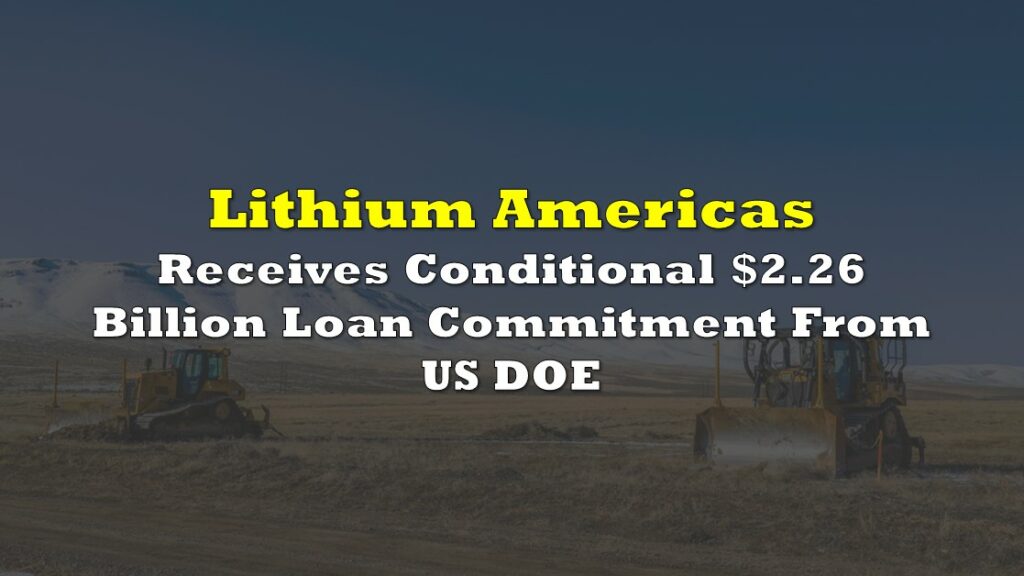On August 5, Lithium Americas Corp. (TSX: LAC) reported generally constructive operating results for 2Q 2021. Lithium Americas is a pre-revenue company, so it reported a loss and negative cash flow, but the company’s capital expenditure guidance and financial disclosures should be well received by investors.
First and most importantly, Lithium Americas announced that its Cauchari-Olaroz lithium brine project in Argentina remains on track to begin production in mid-2022. Lithium Americas owns 49% of the project in Argentina, and China’s largest lithium company, Ganfeng Lithium, owns the balance, or 51%. The Argentine facility is forecast to produce 40,000 tonnes of battery-grade lithium carbonate annually for 40 years.
Furthermore, Lithium Americas has begun development planning for a “Phase 2” of the project, which would add incremental capacity of 20,000 tonnes per year (bringing the total to 60,000 tonnes per annum). Construction is contemplated to begin in the second half of 2022.
Second, as of June 30, 2021, Lithium Americas and Ganfeng have together spent US$471 million, or 73%, of the US$641 million of the budgeted capital expenditures on Cauchari-Olaroz. This compares with cumulative spending of US$426 million and US$388 million as of 3/31/21 and 12/31/20, respectively. This rapid pace of quarterly capex spending seems consistent with Lithium Americas’ production commencement target of mid-2022.

Third, Lithium Americas has been notified of the approximate timing of a legal ruling regarding its 100%-owned Thacker Pass project in the U.S. state of Nevada. Thacker Pass may produce 60,000 tonnes of battery-grade lithium carbonate per year for 46 years. On February 26, four conservation groups filed a federal lawsuit in the District of Nevada saying the U.S. Bureau of Land Management’s January 2021 decision to approve the project could threaten the sage grouse and other wildlife. The groups requested a preliminary injunction to prohibit construction in U.S. Federal District Court in Reno, Nevada on May 27. A ruling from Chief Judge Miranda Du is expected in early 2022.
Lastly, Lithium Americas’ financials look to be in good shape. Its cash burn was only about US$23 million (US$8.6 million of negative operating cash flow and US$14.7 million of Cauchari-Olaroz capex) in 2Q 2021. In turn, the company’s cash balance edged down only slightly to US$505 million from US$514 million on March 31, 2021. Debt rose moderately to US$154 million at the end of June from US$135 million as of 3/31/21.
| (in thousands of US $, except for shares outstanding) | 2Q 2021 | 1Q 2021 | 4Q 2020 | 3Q 2020 | 2Q 2020 |
| Operating Income | ($13,043) | ($8,759) | ($8,065) | ($5,743) | ($6,494) |
| Operating Cash Flow | ($8,631) | ($11,416) | ($7,108) | ($7,204) | ($8,355) |
| Cauchari-Olaroz Capex | ($14,700) | ($16,170) | ($14,710) | ($9,343) | ($24,262) |
| Cash – Period End | $505,241 | $514,205 | $148,070 | $71,888 | $49,719 |
| Debt – Period End | $153,729 | $134,961 | $121,221 | $122,294 | $151,371 |
| Shares Outstanding (Millions) | 119.9 | 119.9 | 101.1 | 91.4 | 90.6 |

The odds that Lithium Americas’ Cauchari-Olaroz project commences lithium production in a year or less seem to be bolstered by the details of the company’s 2Q 2021 earnings release. Given the extremely strong EV-linked demand for lithium, the company looks to be very well positioned over the intermediate to long term. Note the doubling of China lithium carbonate prices over the past year (the red line on the figure above).
Lithium Americas Corp. last traded at C$18.57 on the TSX Exchange.
Information for this briefing was found via Sedar and the companies mentioned. The author has no securities or affiliations related to this organization. Not a recommendation to buy or sell. Always do additional research and consult a professional before purchasing a security. The author holds no licenses.









